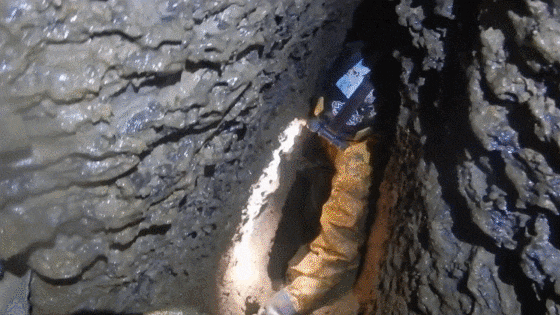After more than six months of preparation and 14 hours underground, a group of cavers has uncovered Australia’s deepest known cave, at a depth of 401 meters.
Key points:
- The new cave, dubbed “Delta Variant”, is anticipated to be 401 meters deep, 4 meters deeper than the previous record
- The expedition started at 11am on Saturday and finished just after 1am on Sunday, taking 14 hours
- The group says they plan to explore and chart other areas of the cave system which remain unexplored
The newly discovered cave, named “Delta Variant”, is connected to the Niggly/Growling Swallet cave system north-west of Hobart.
Niggly Cave, at 397 meters, held the previous record for Australia’s deepest known cave.
The group from the Southern Tasmanian Caverneers, a speleological organization based in Hobart, began their descent at the mouth of the cave at Mount Field National Park around 11am on Saturday morning.
The cavers emerged victorious just after 1am on Sunday morning.
“It’s been a lot of work to get to the point where we are now,” said team member Ciara Smart.
“Yesterday, we made the breakthrough — and there was always the possibility that we weren’t going to make the connection, but we did.
“And excitingly, we’ve added to a bit of Australia’s caving history.”
The experienced team faced challenging conditions during their seven-hour descent due to high water levels from recent snowfall in the area.
“Saturday’s trip involved an hour and a half bushwalk up a hill, then over 14 hours of abseiling, crawling, squeezing, and rope-climbing, then a long walk back down the hill,” said project organizer Stephen Fordyce.
“About 300m vertical meters was descended on ropes, then painstakingly climbed back up again, with heavy packs full of wet, muddy ropes.
“That 400m depth represents almost six Wrest Point Casinos stacked on top of each other, or three Sydney Harbor Bridges,” said Ms Smart.
loading
The history behind the cave’s name
The team said they wanted to give a nod to the time the cave was discovered, during the era of the COVID-19 Delta variant.
“The first section of the cave is called the ‘Test Station Queue’, which is a really annoying, long, windy, and tight 300m meander that is just so frustrating,” said Ms Smart.
“We’ve got a passage called ‘Super Spreader’, that’s because it’s a big, big passage and it’s got lots of different routes going off it, so that seemed appropriate,” said fellow caver Karina Anders.
“And then we called the giant 163m pitch ‘Daily Cases’, because at the time it seemed like the daily cases were just going up and up, and up,” added Ms Smart.
“The last pitch that we rigged yesterday is called ‘Freedom Day’, and I guess that’s more of a tribute to the Melbournians on the trip,” said Ms Anders.
The team spent the past six months preparing for the record attempt by fixing ropes down the cave and exploring side passages.
“We’ve kind of always hypothesised that this cave existed because Niggly is this big cave system and it has this waterfall coming in, and for years cavers have been running looking at this waterfall and wondering, ‘Where has this water been running from? ‘ Ms Anders said.
“The actual logistics of preparing for this connection have been intense.
“It takes a huge amount of planning to have the right people and equipment in the right place. It’s been like climbing a mountain in reverse.
“Each trip we have taken as much rope as we can carry, then descended while exploring side passages, then we go back up. The next trip we bring more rope and go a bit further.”
Despite the exhaustive preparation process, Ms Anders said it was worth it.
“If you can imagine what it’s like if say you were abseiling off the top of the Sydney Harbor Bridge the whole way down to the water — but it’s pitch black and maybe there’s a couple of people on the rope below so you can sort of faintly see their light—and all you can hear is the roar of a waterfall.”
Discovery is just the tip of the iceberg
While there aren’t any massive missions on the cards in the near future, Ms Anders and Ms Smart both agreed there was still much more to discover.
“Until six months ago, no one even knew that this cave existed. Despite decades of exploration in the area, Tasmania’s caves still hold many secrets,” said Ms Anders.
“There’s still more to be done. We’ve made the connection, but we’re not finished exploring the cave yet,” said Ms Smart.
.
